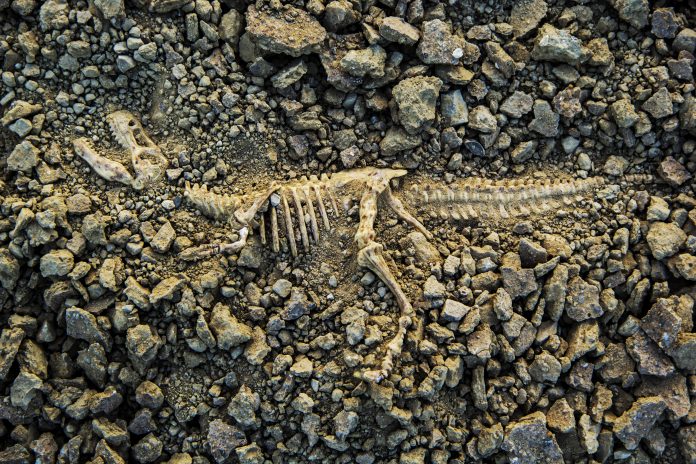Stephanie E. Hampton, Division Director and George W. Gilchrist, Acting Deputy Division Director, at the National Science Foundation’s Division of Environmental Biology, convey that now is a time of unprecedented opportunity for ecology and evolutionary biology
The disciplines of ecology and evolution have long been integrally associated. Ecology is the study of organisms’ relationships with each other and their environments; evolution draws upon the understanding of these relationships to elucidate the processes by which organisms change over time and produce observed patterns in biodiversity. While the term ecology did not exist at the time that Charles Darwin took his voyage on The Beagle, his comparisons of the ways in which organisms interacted with each other and their environments (i.e. ecology) laid the foundations for understanding natural selection as a major force in evolution and patterns of biodiversity. In the decades since Darwin, technological advancement has transformed our understanding of ecological and evolutionary processes, allowing researchers to discern mechanisms underlying biological patterns from global to molecular scales. Over time, the fields of ecology and evolutionary biology have broadened and deepened, yet the fundamental nature of their interrelatedness continues to argue for them to progress side by side, as is evidenced by the many “Ecology and Evolution” programmes across universities worldwide.
Accordingly, at the National Science Foundation (NSF), the Biological Sciences Directorate (BIO) provides research funding for core ecology and evolutionary research through a single division, the Division of Environmental Biology (DEB). DEB supports research and training on evolutionary and ecological processes acting on organisms across multiple levels of organisation – from populations to ecosystems.
DEB core programmes are organised into four research clusters – Evolutionary Processes, Systematics and Biodiversity Sciences, Population and Community Ecology and Ecosystem Sciences. In these core programmes, innovative topics proposed by the research community comprise a diverse portfolio of research projects, fostering breakthroughs that can transform biology and disciplines beyond. For example, DEB has long supported epigenetics research, in which researchers examine the genome at the molecular level and seek to understand how it interacts with the environment to shape an observed organism’s physical, behavioural and other biological traits. Epigenetics is now garnering increasing attention as we learn more about how the environment experienced by a parent can alter the genome and the traits of offspring, including humans. Epigenetics has been a high-profile topic for the Rules of Life theme within NSF’s “10 Big Ideas,” drawing vibrant interdisciplinary research to exciting questions at the core of DEB research.
Many of the transformative advances in evolution and biodiversity research have been propelled by the decreasing cost and increasing performance of genomic technologies; these approaches are now changing research throughout ecology as well. Genomic approaches not only add new dimensions to studies of familiar organisms, such as plants and animals but also constitute the only feasible mode of comprehensively researching the ecology and evolution of microbes.
An explosion of research in all areas of biology focuses on the associations between microbes and larger, multicellular organisms. Most organisms, including humans, cannot survive without their microbial partners. DEB researchers are working to understand how microbiomes evolve and function in ecological and evolutionary processes. For example, bees are the most important pollinators of crops and other plants and are estimated to contribute at least $15 billion to U.S. crop production. Bees depend on their microbiomes to develop from larvae to adult, however, the normal microbial symbionts can be altered by pathogens, pesticides and invasive species. Researchers seek to characterise microbial diversity in flowers and pollen and then determine the nutritional role of those microbes in the development and health of larval bees. The goal is a comprehensive understanding of how bees and flowering plants interact via their shared microbial partners. Similarly, in virtually all plants, mycorrhizal fungi play a unique role in providing essential nutrients for growth. Research enabled by genomic sequencing is being used to probe this symbiosis. This project will determine how mycorrhizal symbioses affect the diversity, productivity and composition of plant communities. A better understanding of these interactions will help scientists and land managers sustain robust and resilient ecosystems.
Beyond these advances in core areas of ecology and evolutionary research, DEB partners with other NSF divisions and agencies to promote interdisciplinary research at the cutting edge of environmental biology. For example, DEB initiated the Dimensions of Biodiversity program in 2010 with a plan to revolutionise our understanding of the origins, maintenance and consequences of biodiversity. DEB has partnered with the NSF Geosciences Directorate, NASA and international funding agencies to expand the scope of these projects, which now number over 100. One important Dimensions project focuses on explanation and prediction of the distribution of animal and plant species in the megadiverse Brazilian Atlantic forest. This work combines cutting edge remote sensing, fossil pollen studies, molecular genetics, physiological assays and modern-day to paleoclimatic data to demonstrate how
In recognition of both the need to address environmental questions at increasingly large scales and the tremendous potential of new technologies, BIO has taken the bold step of creating the National Ecological Observatory Network (NEON), managed by NSF’s Division of Biological Infrastructure. NEON’s network of instrumentation provides data to researchers in ecology, evolution and allied disciplines. NEON is designed to provide open access for scientists, educators, resource managers, policymakers and members of the general public interested in forecasting the impacts of climate change, land-use change and invasive species on ecological systems. In 81 terrestrial and aquatic sites across the nation, data are collected on select variables ranging from the biodiversity of native and invasive species to elemental chemistry and gas flux, genomics and disease occurrence. The NEON system is strategically designed to address environmental questions for which a coordinated network of standardised observations is particularly effective. In 2019, the construction was completed and the Observatory moved into full operations, poised to scale up our understanding of the Earth’s systems to a degree never before possible.











